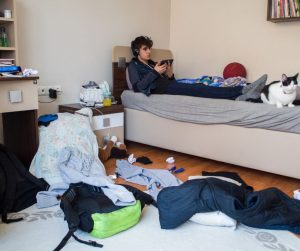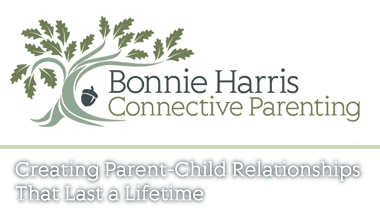 If you want your children to become respectful, responsible people, you must model that behavior. With poor boundaries, this is hard to do.
If you want your children to become respectful, responsible people, you must model that behavior. With poor boundaries, this is hard to do.
Contrary to popular opinion, boundaries and limits are very different from one another, although many use the words interchangeably. The word boundary is often used to refer to setting limits. Kids “push boundaries” or they won’t “listen to the boundaries”. It is the rare parent who understands the true meaning of boundaries. And it’s no wonder. Many of us were not brought up with them.
When we say someone doesn’t have good boundaries, we are talking about a dividing line between two people and their personal space and responsibilities.
When people blame others or situations for how they feel or for their life circumstances, they have crossed that line, taking no responsibility for themselves. They have poor boundaries.
Good boundaries are essential for a family to work cooperatively as a team.
Limits
Limits are what you impose to keep your children safe and behaving appropriately. Limits are parameters you set around your children’s behavior using your parental authority—your personal decisions about what is and is not okay for your child to do based on your values and expectations of behavior. Limits have all to do with your personal parenting style.
Setting effective limits requires understanding your child’s stage of development and individual temperament so that you know what is and is not realistic to expect. Expecting a child to be considerate of others before he is cognitively able, sets an ineffective limit and crosses a boundary. He is not responsible for behaving considerately yet.
Some limits are hard and fast—”No playing in the street.” Some limits are important to you but not to your child—”You may not have ice cream right before dinner.”
Effective limits set a parameter around your child beyond which they are not allowed to go, but within which they have personal choice.
Boundaries
Boundaries are not individually decided. They exist between people in relationship and are learned (or not) in childhood depending on how well parents set them. For this article, I focus on the boundaries between parent and child. Good boundaries are fundamental in raising healthy, resourceful, resilient, and interdependent children.
I think of a boundary as a translucent, flexible film between parent and child.
~ On the parent’s side of the boundary, I know that my thoughts, emotions, and behavior are mine. I take full responsibility. I do not blame how I feel or what I do on anyone else.
~ On my child’s side of the boundary, I recognize that her thoughts, emotions, and behavior are hers and not mine to control or take responsibility for.
Understanding the boundaries between you and your child requires understanding who owns the problem: whose agenda it is, who initially has the issue or upset.
 If the parent wants a child’s messy room cleaned, it is the parent’s problem. If the child is fighting with a sibling, it is the child’s/children’s problem. The messy room and the children’s fight need to be dealt with, but how it turns out (cooperation or power struggle) has all to do with understanding the ownership of the problem.
If the parent wants a child’s messy room cleaned, it is the parent’s problem. If the child is fighting with a sibling, it is the child’s/children’s problem. The messy room and the children’s fight need to be dealt with, but how it turns out (cooperation or power struggle) has all to do with understanding the ownership of the problem.
If you are upset about something your child has done, your emotions are yours to own. They are not due to your child’s behavior. Your child is not at fault for how you feel or react. (Someone else might feel differently about the behavior). In blaming, you are saying to your child, you are responsible for my emotions. Believing this might be how you were raised, making it difficult to see it differently with your children. But when children feel blamed for what is not their fault, they fight and blame back or back down in shame.
Your children are not responsible for what you feel, say or do.
You are 100% responsible for everything you feel, say and do.
If you follow these 2 principles, you will be a responsible person with excellent boundaries, who has no need for blame. Of course, you feel all kinds of feelings when your kids do things you hate at the end of the day when you are beyond exhausted. Of course, you are likely to lose it. But no one is responsible for that but you. Blaming them for “not listening” will only make things worse.
When it’s your problem, own it:
- Start with I:
“I do not like it when….”
“It is not okay with me that you do….”
“I get so angry when I see toys left all over.”
“I don’t like it when I say something and get no response.”
- Blaming with “You never…. Why do you always…?” will result in defensive behavior. And you teach your child the power of blaming others.
- Or do nothing, understanding your child is not responsible.
- Ask for help with your problem or move into problem solving. When you take responsibility for your stuff, your child is likely to listen because he doesn’t feel pressured, criticized, wrong or bad. Ask for cooperation with tone of asking a favor (not asking permission).
“Can I please have your attention for one minute?”
“I would like to know when the toys will be picked up and if you need help.”
“How can we work this out, so it works for both of us?”
When it’s your child’s problem:

- Do not “fix” it.
- Listen as child complains, cries, etc. allowing all emotions.
- Validate. Hear child’s intent, not words, and reflect back.
“It sounds like it was really hard for you to stop what you were doing.”
“I hear how much you want to go to that party.”
“You are very upset that I told you to ….”
- Don’t take it personally. It’s not about you. Even name calling.
- Support and guide child in finding her own solution.
“What would you like to do about it?”
“What do you wish you could say to her?”
“How can we both get what we want?”
- Negotiate, make compromises, problem solve.
- Offer suggestions only if child is stuck.
- Offer other outlets for child to express feelings – punching pillow, something to hit or kick.
- Trust your child to find his own way to solve his own problems. He can do that when he feels supported and gotten.
You cannot control anyone else’s feelings or behavior. What you can do is:
~ change your own behavior
~ change your perception of your child’s behavior
~ influence your child’s behavior with your own
Related Articles and Videos







